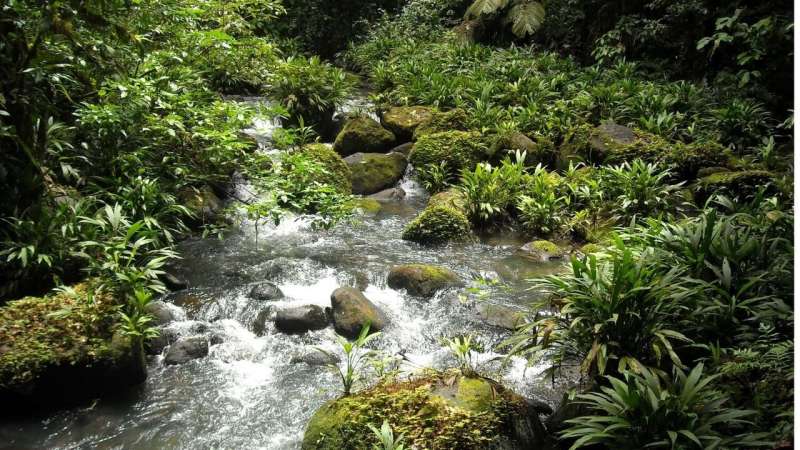Fertilizer runoff in streams and rivers can have cascading effects, analysis shows

Fertilizer pollution can have significant ripple effects in the food webs of streams and rivers, according to a new analysis of global data. The researchers also found some detection methods could miss pollution in certain types of streams.
The analysis, published in Biological Reviews, combined the results of 184 studies drawn from 885 individual experiments around the globe that investigated the effects of adding nitrogen and phosphorus, the main components of fertilizer, in streams and rivers. While the analysis only included studies where scientists added nitrogen and phosphorus experimentally, nitrogen and phosphorus pollution can run off from farms into streams, lakes, and rivers—as well as from wastewater discharge. At high levels, fertilizer pollution can cause harmful algal blooms and can lead to fish kills.
"Overall, we found that high levels of nutrients affect streams and rivers everywhere," said the study's lead author Marcelo Ardón, associate professor of forestry and environmental resources at North Carolina State University. "Wherever we looked, we saw increases in the abundance and biomass of organisms that live in streams, and also the speeding up of processes that happen in streams—how fast algae grow, how fast leaves decompose, and how fast organisms grow that feed on them."
Across the studies, the researchers saw that nitrogen and phosphorus led to increased growth across the food web, such as in algae, the insects that eat the algae and the fish that eat the insects. In shaded streams where algae doesn't grow, they reported nitrogen and phosphorus sped decomposition of leaves and boosted growth of organisms that feed on them.
"We saw an average 48 percent increase overall in biomass abundance and activity in all levels of the food web," Ardón said. "We also found that the food webs responded most strongly when both nitrogen and phosphorus were added together."
While experts already use the presence of a specific type of chlorophyll—chlorophyll a—in water to detect algae growth, researchers said using that method could miss pollution in waterways where algae do not grow, and where decomposition of leaves or other plant matter is the primary source of food for other organisms.
"The food webs in those streams don't depend on algae—the trees shade out the algae," Ardón said. "The streams there depend on leaves that fall in and decompose, which is what the insects, such as caddisflies and stoneflies, are eating. In those detrital-based streams, we found similar responses to increases in nitrogen and phosphorus as has been found in algae."
Another finding was that factors such as light, temperature, and baseline concentrations of nitrogen and phosphorus impacted the response to increases in the two nutrients.
"All of those things will determine how much of a response you get to increased nitrogen and phosphorus," said study co-author Ryan Utz of Chatham University.
The findings have implications for environmental policy, Ardón said.
"The EPA has been asking states to come up with ways to reduce runoff of nitrogen and phosphorus into streams, because we know they can cause these really big problems," said Ardón. "We know that at a big scale, and we don't really know the details. A lot of states that are coming up with criteria to reduce the amount of nutrients in the water focus only on algal responses. Our study suggests regulators should expand their view."
The study, "Experimental nitrogen and phosphorus enrichment stimulates multiple trophic levels of algal and detrital-based food webs: a global meta-analysis from streams and rivers," was published Dec. 17 in Biological Reviews.
More information: Marcelo Ardón et al. Experimental nitrogen and phosphorus enrichment stimulates multiple trophic levels of algal and detrital‐based food webs: a global meta‐analysis from streams and rivers. Biological Reviews. First published: 17 December 2020. doi.org/10.1111/brv.12673
Provided by North Carolina State University




















